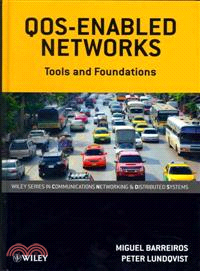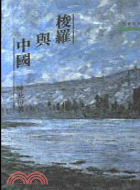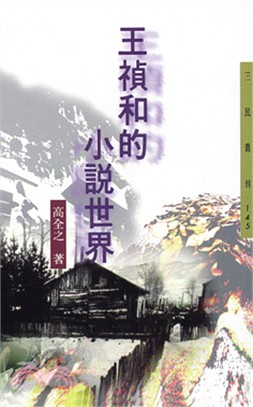QOS-ENABLED NETWORKS - TOOLS AND FOUNDATIONS
商品資訊
ISBN13:9780470686973
出版社:JOHN WILEY & SONS;LTD
作者:BARREIROS
出版日:2010/12/31
裝訂/頁數:精裝/242頁
商品簡介
"This is the first book about QOS that I actually enjoyed reading precisely because the authors focused on real-life QoS and not in academic discussions about it."
Per Nihlen, IP Network Manager, NORDUnet
The new authoritative, practical guide to delivering QOS guarantees
This new benchmark in quality of service (QOS) study is written by two experts in the field who deal with QOS predicaments every day. The authors not only provide a lucid understanding of modern theory of QOS mechanisms in packet networks but how to apply them in practice. In addition, they detail the QOS management features found in modern routers used by Internet Service Providers (ISPs) and large enterprise companies and networks, all in an effort to enable network managers and engineers to configure production networks with a quality of service guarantee. The book's focus on addressing network behavior ("real effects") in relation to the configuration of network elements (routers and switches), is both refreshing and insightful.
QOS-Enabled Networks contains up-to-date coverage of:
- QOS mechanisms in packet networks and how to apply them in practice
- QOS management features now common in modern-day routers
- How network behavior is related to configuration of network elements
- Layer 2 VPN and QOS
- QOS in mobile LTE networks
QOS-Enabled Networks is an invaluable guide for networking engineers needing to provide QOS services for service providers, ISPs and large enterprises, as well as for network design and operations engineers.
作者簡介
Peter Lundqvist is a senior Beta-engineer working in Juniper Networks Systest with support of field test of new features and solutions before they are public available. Prior to working in Juniper Networks Engineering department, Peter worked as professional services engineer with network design and implementation of large-scale networks including QOS topics. Peter has worked more than 8 years in Juniper Networks. Prior to joining Juniper Networks Peter worked in Cisco Systems as Consulting Engineer.
目次
Foreword.
Preface.
Acknowledgements.
Abbreviations
PART I THE QOS REALM.
1 The QOS world.
1.1 Operation and Signaling.
1.2 Standards and Per-Hop Behavior.
1.3 Traffic Characterization.
1.4 A Router without QOS.
1.5 Conclusion.
References.
Further Reading.
2 The QOS Tools.
2.1 Classifiers and Classes of Service.
2.2 Metering and Coloring – CIR/PIR Model.
2.3 The Policer Tool.
2.4 The Shaper Function.
2.5 Comparing Policing and Shaping.
2.6 Queue.
2.7 The Scheduler.
2.8 The Rewrite Tool.
2.9 Example of Combining Tools.
2.10 Delay and Jitter Insertion.
2.11 Packet Loss.
2.12 Conclusion.
Reference.
3 Challenges.
3.1 Defining the Classes of Service.
3.2 Classes of Service and Queues Mapping.
3.3 Inherent Delay Factors.
3.4 Congestion Points.
3.5 Trust Borders.
3.6 Granularity Levels.
3.7 Control Traffic.
3.8 Trust, Granularity, and Control Traffic.
3.9 Conclusion.
Further Reading.
4 Traffic Types.
4.1 Anatomy of the TCP Protocol.
4.2 The TCP Session.
4.3 TCP Congestion Mechanism.
4.4 TCP Congestion Scenario.
4.5 PMTU.
4.6 QOS Conclusions for TCP.
4.7 Real-Time Traffic.
4.8 Anatomy of Real-Time Traffic.
4.9 RTP.
4.10 VOIP.
4.11 QOS Conclusions for VOIP.
4.12 IPTV.
4.13 Long-lived versus Short-lived Sessions.
4.14 Example of Internet Radio/Video.
4.15 Example of Peer-to-Peer (P2P) Applications.
4.16 Discovering P2P on the Network.
4.17 Illegal File Sharing and Copyright Violation.
4.18 QOS Conclusions for New Internet Applications.
References.
Further Reading.
PAER II TOOLS.
5 Classifiers.
5.1 Packet QOS Markings.
5.2 Inbound Interface Information.
5.3 Deep Packet inspection.
5.4 Selecting Classifiers.
5.5 The QOS Network Perspective.
5.6 MPLS DiffServ-TE.
5.7 Mixing Different QOS Realms.
5.8 Conclusions.
References.
6 Policing and Shaping.
6.1 Token Buckets.
6.2 Traffic Bursts.
6.3 Dual-Rate Token Buckets.
6.4 Shapers and Leaky Buckets.
6.5 Excess Traffic and Oversubscription.
6.6 Comparing and Applying Policer and Shaper Tools.
6.7 Conclusion.
Reference.
7 Queuing and Scheduling.
7.1 Queuing and Scheduling Concepts.
7.2 Packets and Cellification.
7.3 Different Types of Queuing Disciplines.
7.4 FIFO - First in, First out.
7.5 Fair Queuing.
7.6 Priority Queuing.
7.7 Weighted Fair Queueing.
7.8 Weighted Round Robin.
7.9 Deficit Weighted Round Robin.
7.10 Priority-Based Deficit Weighted Round Robin.
7.10 Conclusions about the Best Queuing Discipline.
Further Reading.
8 Advanced Queueing topics.
8.1 Hierarchical Scheduling.
8.2 Queues Lengths and Buffer Size.
8.3 Dynamically Sized versus Fixed-size Queue Buffers.
8.4 RED - Random Early Discard.
8.5 Using RED with TCP Sessions.
8.6 Differentiating Traffic Inside a Queue with WRED.
8.7 Head versus Tail RED.
8.8 Segmented and interpolated RED Profiles.
8.9 Conclusion.
Further Reading.
PART III CASE STUDIES.
9 The VPLS Case Study.
9.1 High-Level Case Study Overview.
9.2 Virtual Private Networks.
9.3 Service Overview.
9.4 Service Technical Implementation.
9.5 Network Internals.
9.6 Classes of Service and Queue Mapping.
9.7 Classification and Trust Borders.
9.8 Admission Control.
9.9 Rewrite Rules.
9.10 Absorbing Traffic Bursts at the Egress.
9.11 Queues and Scheduling at Core-Facing Interfaces.
9.12 Queues and Scheduling at Customer-Facing Interfaces.
9.13 Tracing a Packet Through the Network.
9.14 Adding More Services.
9.15 Multicast Traffic.
9.16 Using Bandwidth Reservations.
9.17 Conclusion.
Further Reading.
10 Case Study IP RAN and Mobile Backhaul QOS.
10.1 Evolution from 2G to 4G.
10.2 2G Network Components.
10.3 Traffic on 2G Networks.
10.4 3G Network Components.
10.5 Traffic on 3G Networks.
10.6 LTE Network Components.
10.7 LTE Traffic Types.
10.8 LTE Traffic Classes.
10.9 Conclusion.
References.
Further Reading.
11 Conclusion.
Index.
主題書展
更多書展本週66折
您曾經瀏覽過的商品
購物須知
外文書商品之書封,為出版社提供之樣本。實際出貨商品,以出版社所提供之現有版本為主。部份書籍,因出版社供應狀況特殊,匯率將依實際狀況做調整。
無庫存之商品,在您完成訂單程序之後,將以空運的方式為你下單調貨。為了縮短等待的時間,建議您將外文書與其他商品分開下單,以獲得最快的取貨速度,平均調貨時間為1~2個月。
為了保護您的權益,「三民網路書店」提供會員七日商品鑑賞期(收到商品為起始日)。
若要辦理退貨,請在商品鑑賞期內寄回,且商品必須是全新狀態與完整包裝(商品、附件、發票、隨貨贈品等)否則恕不接受退貨。
























